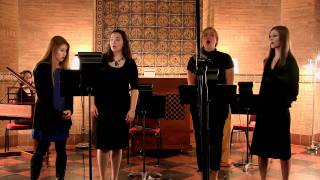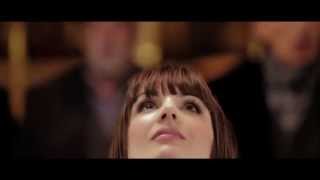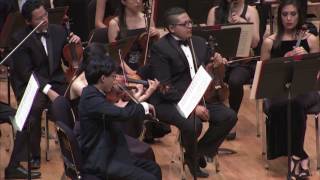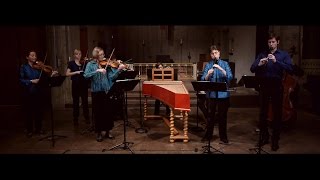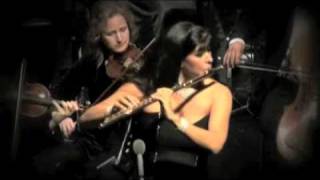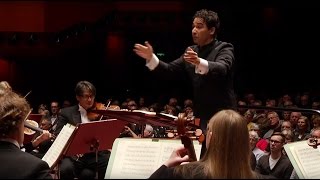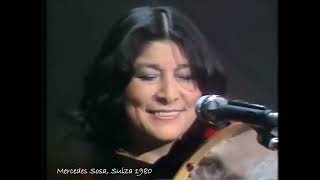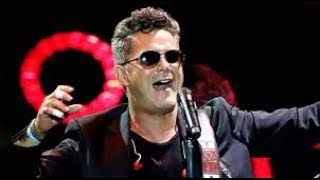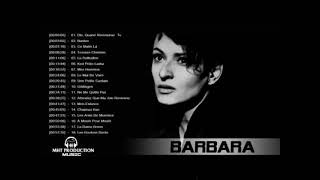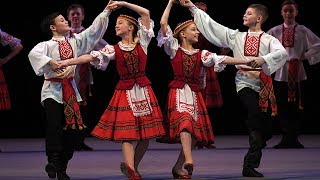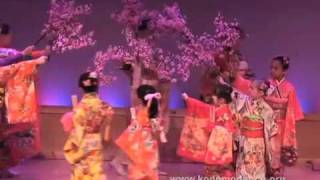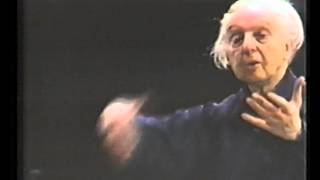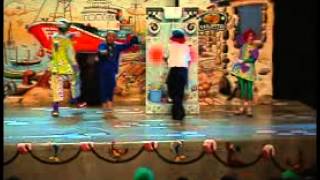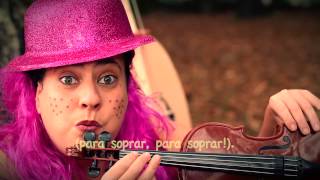November 1st is World Ecology Day
November 2nd is All Souls' Day
Recommended music videos for initiation to classical music
Ludovico Einaudi (1955) is an Italian composer and pianist who, trained at the Verdi Conservatory in Milan , began his career as a classical composer, later incorporating other styles and genres such as pop, rock, folk and world . He represents one of the successes of new age music in recent years, not only for record sales, but also for the concerts performed around the world. The same year he graduated in composition he received a scholarship to the Tanglewood Festival in the United States and continued his studies with the composer Luciano Berio . He is a curious musician and open to experimenting from jazz and rock to more contemporary music. His music is ambient, meditative and often introspective.
In 2016, Einaudi participated in the Greenpeace Save the Arctic campaign video, which was filmed in the middle of the Arctic . As part of the campaign, Einaudi composed Elegy for the Arctic , a musical piece that unites the voices of eight million people who have signed to save the Arctic and of which we offer today a small fragment with the author at the piano.
Hans Leo Hassler (1564-1612), born in Nuremberg , was an organist and composer who studied with his father, who was also an organist, and completed his studies in Venice with Andrea Gabrielli. In 1585 he settled in Augsburg as an organist, returning at the age of six to his native Nuremberg as Kappellmeister , and in 1806 he moved to Dresden as organist and Kappelmeister . He wrote numerous songs, madrigals, works of a religious nature and pieces for the organ. Hassler was an ardent supporter of the assimilation of Italian art to fashion, to which he was less united by the expressiveness of the madrigal than by the sweetness of the canzonetta and ballet with singing. In the religious field, Hassler began in the style of Orlando di Lasso , although with secular structures.
The Motet (from the French motet, and this from mot: 'word, motto') is a polyphonic composition born in the 13th century to be sung in churches, and its themes are commonly biblical. They were songs for religious worship for 4 voices in Latin and " a capella " (without instruments). Until the 17th century , it continued to be one of the most important musical forms of polyphonic music. After its birth, in the 13th century , it expanded as a polyphonic vocal piece without instrumental accompaniment (a capella), with a dramatic and imitative character.
Today we present Cantate Domino , a psalm written by Hassler for four equal voices and performed by the UCLA Early Music Ensemble all-female quartet.
Mikel Laboa (1934-2008) was one of the most important Basque singer-songwriters of the late 20th century . Considered the patriarch of Basque music, his music has influenced younger generations. His album Bat-Hiru was voted by popular vote in Diario Vasco as the best Basque album in history. Born in Donostia/San Sebastián , he spent two years of his childhood in the Biscayan town of Lekeitio. He studied Medicine and Psychiatry in Iruña/Pamplona and always combined his artistic career with that of a doctor. His music can be defined as a combination of tradition, poetry and experimentalism, in the style of the singer-songwriters of the 60s and 70s, but with a strong personal touch.
Anne Etchegoyen is a Basque singer and songwriter born in Donapaleu (Saint Palais). Her mother enrolled her at the age of eight in the children's choir that she directed at Saint-Palais . She later studied singing at the Bayonne Conservatory , which she does in Basque, French, Spanish and Gascon . Her album Les Voix Basques ("The Basque Voices"), has been certified gold in France after selling more than 60,000 copies and she has given concerts in several countries such as Argentina, the United States, England, Ireland, Spain and the Basque Country . In 2014 she went on tour with Basque eta Paz Tour , to spread her idea of peace for the Basque Country .
Txoria txori (sometimes titled Hegoak ) is a Basque poem written by Joxean Artze in 1957 and set to music by Mikel Laboa in 1968. “If I had cut off its wings it would have been mine, it would not have escaped me; but then it would have ceased to be a bird.” Artze was 25 years old when he wrote this poem, which deals with freedom and with possession, dominance and respect between people and animals.
Today Anne Etchegoyen , accompanied by the Aizkoa men's choir and an instrumental background, offers us the song
Gustav Mahler (1860-1911) was a composer and conductor born in Kaliště , now in the Czech Republic , who is considered one of the most eminent composers of post-romanticism. His creative work focused on the symphony, the lied (lyric song) and the combination of both concepts; to this must be added the diversity of elements with which he worked (popular melodies, military melodies, fanfares of various kinds...), the manifest dissonances to which the public was not accustomed and the long duration of his symphonies; if we add to this the fact that he faced certain anti-Semitic press due to his Jewish origins, it is not surprising that his compositions did not have the success they deserved during his lifetime.
Gustav Mahler 's Symphony No. 1 ("Titan") in D major was completed in 1888, a year before its Budapest premiere in 1889. The work was originally conceived as a long symphonic poem, in which Mahler used music from his abandoned opera project Rübezahl and incidental music composed for Viktor Nessler 's play The Trumpet from Säkkingen . At every performance after its Budapest premiere, the work was met with almost total rejection by critics and audiences. Mahler subsequently revised the symphony on several occasions, and today it is one of Mahler 's most highly regarded symphonys, due to its great melodic richness, and is quite frequently performed in concert halls.
The First Symphony-III Mov: Funeral March begins with a minor variation of the popular “ Frère Jacques ” followed by a popular Bohemian theme; both themes are elaborated and contrasted in a nostalgic, burlesque and sombre atmosphere. Today it is offered to us by a Mexican Youth Orchestra; it is the Eduardo Mata Youth University Orchestra of the UNAM , conducted on this occasion by maestro Gustavo Rivero Weber .
Recommended classical music videos
Johann Sebastian Bach (1685-1750) was a German violinist, organist, conductor and composer. He was born in Eisenach into the most prominent musical family in history, with more than 30 famous composers in its midst. In 1703 he obtained his first job as court musician to the Prince of Arndstat and in 1707 he moved to Mülhausen as an organist, where he married his cousin Maria Barbara with whom he had seven children. After the death of his wife in 1720, he remarried Maria Magdalena a year and a half later, with whom he would have another thirteen children. In 1723 he moved to Leipzig, where he would reside until his death at the age of 65. A prolific composer, he is considered one of the three main geniuses in the history of music along with Mozart and Beethoven.
The catalogue of Bach's works or Bach-Werke-Verzeichnis , better known by its initials BWV , consists of a numbered index of all the composer's works arranged thematically by type of work or genre and according to their vocal or instrumental nature and used by scholars and musicians around the world. This catalogue was created in 1950 by the German musicologist Wolfgang Schmieder .
The Brandenburg Concertos are a collection of six concertos (Concertos Nos. 1, 2, 4 and 5 are concertos grosso; Nos. 3 and 6 are orchestral) that Johann Sebastian Bach presented in 1721 to Christian Ludwig , Marquess of Brandenburg , and are something of a “jewel in the crown” of not only Bach 's but also the entire Baroque instrumental music. Bach probably composed the concertos over a period of years while he was Kapellmeister in Köthen . Heinrich Besseler , the eminent German musicologist, has pointed out that the total strength required (leaving aside the first concerto, which was rewritten for a special occasion) exactly matches the 17 performers Bach had at his disposal in Köthen .
Brandenburg Concerto No. 4 in G major, BWV 1049 . Articulated in three movements – I () ALLEGRO .-. II (6´47´´) ANDANTE .-. III (10´27´´) PRESTO – the fourth concerto is one of the most luminous in terms of expression and one of the most modern in terms of conception, since it clearly announces the model of the concerto that would flourish in the galante style and later in classicism. The violin part is extremely virtuosic in the first and third movements. In the second movement the violin provides the bass when the concert group plays unaccompanied.
Today's performance will be by the American ensemble Voices of Music.
Christoph Willibald Gluck (1714-1787) was a German composer, widely regarded as one of the most important opera composers of the Classical period (1750-1820). He completely reformed opera by eliminating da capo arias and long dry recitatives with harpsichord, replacing them with recitatives accompanied by the orchestra; he dispensed with castrati and the exhibitionism of the singers, giving greater importance to the plot, while elevating the overture, ballet and chorus as integral parts of his operas. Among his most highly valued works are Orfeo ed Euridice (1762) and Alceste (1767) premiered in Vienna , and Iphigénie en Aulis (1774), Armide (1777) and Iphigénie en Táuride (1779) premiered in Paris .
Orpheus and Eurydice is his first opera; written in three acts, it reflects his concerns for renewal, discarding all kinds of trivial manifestations and highlighting the force of the argument; to do so he does not hesitate to use dances and choruses, in addition to the above. The plot of this opera is based on the Greek myth of Orpheus who was able to tame wild beasts with his music and who, after the death of his beloved Eurydice , Cupid allows him to go down to hell to rescue her on the condition that on the way back he does not turn his head to look at her; faced with Eurydice 's insistent pleas, Orpheus turns his gaze towards her, thus definitively losing his beloved.
Today we offer the prelude to the second act, Dance of the Blessed Spirits , with Viviana Guzmán as solo flute.
Ludwig van Beethoven (1770-1827) was one of the giants of Western music along with Bach and Mozart . Born in Bonn , Germany , his father, of Flemish origin, tried to make him a second Mozart , although it was a notable failure. Despite this, from the age of nine, the organist Christian Gottlob Neefe captivated him with the study of Bach . In 1787 he moved to Vienna with the intention of receiving lessons from Mozart , but the death of his mother brought him back to Bonn a few days later. And so after five years, he returned to Vienna where he contacted Haydn and Salieri, making himself known as a composer and pianist with notable public recognition. However, his profession as a pianist could not be realized due to the deafness that attacked him the following year, leaving him totally incapacitated in this faculty.
The catalogue of Beethoven's works . There are 138 musical works composed by Beethoven , arranged by numbers known as opus (Latin for "work") or its abbreviation op. , assigned by the composer's publishers during his lifetime. In addition, there are another 205 works that do not have opus numbers and that were published after the composer's death. These works were assigned WoO numbers (Werke ohne Opuszahl, "works without opus numbers"). This catalogue was first compiled by Georg Kinsky and Hans Halm (Das Werk Beethovens) in 1955.
The Pastoral Symphony (Sixth Symphony) was composed mainly in 1808, although sketches date from 1806. Beethoven conducted the work at its premiere in Vienna on 22 December 1808, in a programme that also included the premiere of the Fifth Symphony . As he began to outline the Pastoral , he jotted down several ideas about programme music: "The listeners should be allowed to discover the situations for themselves." "People will not need titles to recognise that the general intention is more a matter of feeling than of sound painting." "Pastoral Symphony: it is not a picture, but a game in which the emotions born of the pleasure of the countryside are expressed."
Pastoral style . The main elements include bird song themes, hunting horn themes, shepherds' flutes (pifa opifferari) and shepherds' calls (ranz des vaches or yodeling), country dances, representations of flowing water and the bleating of sheep, and imitations of that characteristic instrument of country life, the bagpipe with its low hum.
Structure of the work : I (00:23) Awakening of joyful feelings upon arriving in the country (Allegro ma non troppo) .-. II (11:43) Scene by the stream (Andante molto moto) .-. III (24:12) Fun gathering of country people (Allegro) .-. IV (29:06) Storm. Storm (Allegro) .-. V (32:53) Song of the shepherd. Happy and grateful feelings after the storm (Alegretto).
Today's version is brought to us by the Frankfurt Radio Symphony, conducted by Colombian maestro Andrés Orozco-Estrada .
Ottorino Respighi (1879 – 1936) was an Italian composer, conductor and musicologist. He began studying piano and violin with his father and continued at the Liceo Musicale in Bologna , as well as composition and historical studies of early music. In 1900 he accepted the role of principal violist in the orchestra of the Russian Theatre in St. Petersburg , where he met Rimsky-Korsakov , with whom he studied orchestration for five months, after which he returned to Bologna. In 1913 he was appointed professor of composition at the Conservatorio di Santa Cecilia in Rome , a post he held for the rest of his life. He wrote works for piano, guitar, violin and piano, various chamber ensembles, numerous symphonic music, choral music, eight operas and five ballets.
Gli Uccelli (The Birds) is a suite composed in February 1928 by Ottorino Respighi and premiered on June 6 of the same year, at the Teatro Municipal de São Paulo (Brazil) by the orchestra conducted by the composer himself.
Structure . It consists of five movements, each of which is dedicated to a bird (except the first) and inspired by a composer of the 17th and 18th centuries. I (1´01´´) PRELUDE .-. II (4´10´´) LA COLOMBA (The Dove) inspired by Jacques Gallot .-. III (8´44´´) LA GALLINA inspired by Jean-Philippe Rameau .-. IV (11´52´´) L'USIGNOLO (The Nightingale) inspired by Jacob van Eyck .-. V (16´51´´) IL CUCÙ inspired by Bernardo Pasqini .
Recommended music videos for all tastes
Billie Holiday (1915-1959) was an American singer born in Philadelphia and considered one of the three most important women in the history of jazz along with Sarah Vaughan and Ella Fitzgerald . Her song Strange Fruit was considered the best song of the 20th century by Time magazine and her mastery of swing and expressive ability were reflected both in the composition of her arrangements and songs as well as in their interpretation. Her life from the beginning was very tumultuous with a 13-year-old mother, a 15-year-old father who abandoned her as a baby, a rape she suffered when she was ten and an openly manifested bisexuality. Her addiction to drugs progressively undermined her physical and emotional state until she died at the age of 44.
Lester Young (1909–1959) was an American jazz musician, tenor saxophonist and clarinetist, and one of the most important figures in the history of jazz ; his work spanned the fields of swing, bop, and cool . He is considered, along with Coleman Hawkins , one of the two most influential tenor saxophonists in jazz. In 1927 he left the family band and joined Art Bronson's Bostonians ; during that time he switched to tenor saxophone. He returned to the family band in 1929 and played for a few years as a freelance musician. He played with Count Basie for the first time in 1934; toured with saxophonist/tubist Andy Kirk , and then returned to Basie in 1936. During this time he met the young Billie Holiday , and they became lifelong friends.
Mercedes Sosa (1935-2009) was an Argentine folk music singer, considered the greatest exponent of Argentine folklore. She was known as The Voice of Latin America . Founder of the New Songbook Movement and one of the exponents of the New Latin American Song , she ventured into other genres such as tango, rock and pop ; she defined herself as a "singer" rather than a "singer", a fundamental distinction of the new Latin American song of which she was one of the initiators: "A singer is he who can and a singer is he who must" ( Facundo Cabral ). She was awarded with honors in 2005 by the Argentine Senate with the Sarmiento Prize in recognition of her artistic career, her social commitment and her constant fight for human rights.
Alejandro Sanz ( 1968) is a Spanish singer-songwriter and composer born in Madrid , who has sold more than 25 million records worldwide and has won 24 Latin Grammys and 4 American Grammys . He has also collaborated with various national and international artists. He is an adopted son of the city of Cádiz , having spent his childhood in Algeciras , a city of which he was named ambassador. He performed at the opening ceremony of the 2020 Tokyo Olympics , performing John Lennon 's song " Imagine " with three other internationally famous artists. Each of these artists represented a continent and Alejandro was the representative of Europe . Throughout his successful career, Alejandro has experimented, sought out and accommodated different styles.
Barbara (1930-1997) was a French singer and songwriter of Russian origin. From 1950 to 1952 she lived in Brussels , studying at the NSM college where she became a member of the artistic community. After a difficult start in various Belgian cabarets, she appeared in Paris at L'Ecluse in 1958. At that time she accompanied herself on the piano and performed songs by Georges Brassens and Jacques Brel . She began to sing her own compositions and success came knocking with one of the best-known songs in her discography: Dis, quand reviendras-tu? (1963). In this way, she moved from the cabarets to the great theatres: the Salle Bobino , then the Olympia in Paris and later the Zénith . Considered a key figure in French song, several of her songs are considered by the younger generations as references.
Recommended peculiar videos
Igor Moiseyev (1906-2007), Russian choreographer and dancer who studied with the Bolshoi Theatre Ballet , a company with which he worked and even directed acrobatic dances in Moscow's Red Square until 1930, when the Government placed a new dance company under his direction that would be called the Igor Moiseyev Ballet, with which he would prepare nearly 200 choreographies. Today it is one of the great ballet companies in the world, managing to synthesize the spontaneity of popular Russian dances with the academicism of classical ballet.
Kryzhachok is a popular folk dance from Belarus . This name comes from the Belarusian word for wild goose, kryzhak, as the dance imitates the movements of these birds. The folk dance also had other names such as Kryzhik, Pauluchok, Antoshka that depended on the song. This dance from Belarus is ornamental, performed in pairs by a large group of dancers, in this case, from the Igor Moiseyev Ballet Company .
The jarabe tapatío is a well-known regional Mexican dance from the state of Jalisco ; outside the country, it is known as the Mexican hat dance. The dance from Jalisco represents the courtship of a man towards a woman, beginning with an invitation that he makes to his partner to begin a romantic relationship. During the dance, the charro hat that the man wears in his attire is on the floor and both dancers click their heels around it, until the woman bends down to pick it up. The dance ends when the woman picks up the hat from the floor.
Mariachi Vargas de Tecalitlán is a Mexican folk music group created in 1897 by maestro Gaspar Vargas López (1880-1969), which is currently under the artistic production and general direction of maestro Rubén Fuentes , and whose musical direction is in charge of Carlos Martínez . The group is made up of a harp, a vihuela, a guitar, a guitarrón, three trumpets and seven violins, and they call themselves The Best Mariachi in the World , a name that Fuentes himself (when he was, in 1956, artistic director of RCA Víctor) suggested for the group. In their long career they have performed countless live recitals, in addition to countless recordings.
Traditional Japanese Dances. Their origins date back to the ceremonial dances performed for the Court , to the dances of popular festivals and to the Ennen , which are Buddhist dances. In addition, the Japanese Kabuki theatre is closely linked to these traditional dances, since both leave aside everything superficial and follow the Buddhist philosophy of “bringing the soul closer to heaven”. Traditional Japanese dances consist of slow movements of dancers who remain firm and solid on the ground, moving their feet in short steps with their legs bent. Head movements also play an important role, since they transmit the energy and expression of the Japanese spirit. To the eyes of the spectator, the movements seem very slow, but they require exemplary discipline to achieve special and unique postures. Depending on the type of movements performed by the dancers, there are 3 styles of oriental dance: Mai , which are slow and solemn movements; Odori , a fast and very cheerful dance; and Shosa , where feelings and emotions are expressed.
The kimono is the Japanese costume par excellence and of course, it is used in all these dances. The kimono always matches the age of the dancer, the place where the dance is performed and the time of year, for example wearing pink in spring or ochre colours in autumn. The place where the dance is performed also influences the costume. If the scene is outdoors, the dancers wear wooden sandals, but for indoor dances, they wear tabi socks. As for the makeup and hair of the dancers, the Japanese are very traditional: the face is painted white and eyebrows, eyes and lips are highlighted to give the appearance of porcelain skin. In addition, wigs from the Japanese Middle Ages called katsura are used, which are usually short and black. (Extracted from the Asia Gardens Hotel Blog)
Samuel Barber (1910–1981) was an American composer of chamber and orchestral music. Considered a child prodigy, he began playing the piano at the age of six and composing at the age of seven. In 1958 he staged his first opera, and its success led to a commission for a second lyrical work, Anthony and Cleopatra , which premiered at the opening of the new Metropolitan Opera at Lincoln Center . Barber 's music is elegiac, lyrical, and refined; never abandoning the realm of tonality, he uses a dissonant, sometimes polytonal language; his orchestration is characterized by making the instruments sing. Much of his work is exuberantly melodic and has been described as neo-romantic. He died of cancer in New York in 1981.
Leopold Stokowski (1882-1977) was a British conductor of Polish and Irish descent. He was best known for his free-hand style of conducting, doing away with the traditional baton and obtaining exquisite sounds from the orchestras he conducted. Stokowski mastered all aspects of the complex role of conductor, which he always approached through detailed work, intelligent programming adapted to the capabilities of the orchestra in question and the tastes of the audience, appropriately educated by him if possible, with great attention to the latest compositional trends of his time. He was also a master of orchestral transcriptions.
Today we can attend one of their rehearsals, specifically the rehearsal of Barber 's Adagio
Recommended music videos for children
Various Wikipedia articles have been used to write these texts.
The texts of Videomusicalis are written in Basque, Spanish and English.






